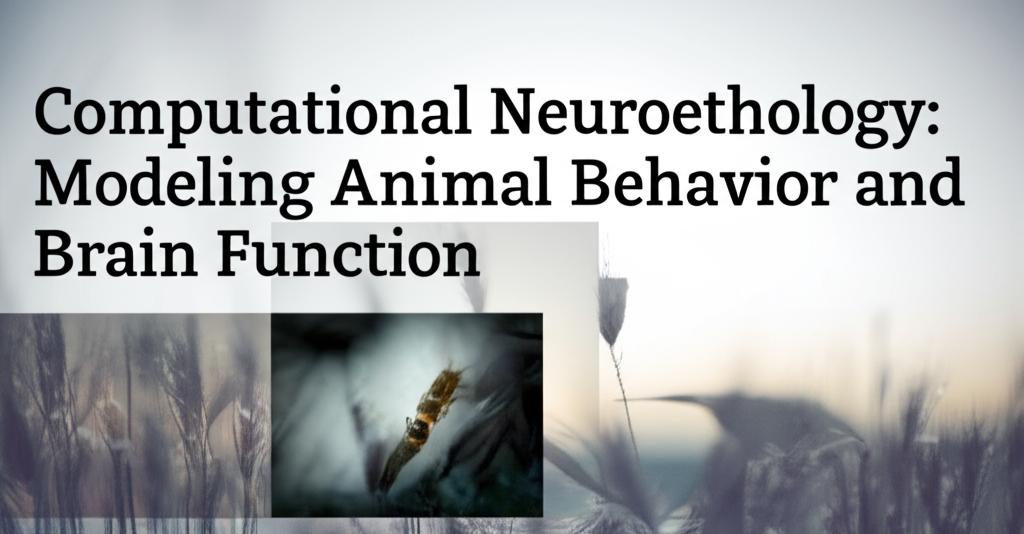Computational neuroethology aims to unravel the complex interplay between an animal's brain and its natural behaviors, those that have been shaped by evolutionary pressures like finding mates, navigating environments, avoiding predators, and locating food. This interdisciplinary field merges neuroscience, the study of the nervous system, with ethology, the study of animal behavior in their natural conditions. By creating computational models of the neural mechanisms driving these behaviors, researchers strive to uncover general principles of nervous system function.
Recent Advancements & Emerging Themes:A significant surge in technological capabilities is currently transforming computational neuroethology. Here's a look at key developments:
- High-Dimensional Data & Naturalistic Behavior: Advanced techniques now allow for the recording of neural activity from vast numbers of neurons, even entire brains in simpler organisms like C. elegans (a type of worm) and zebrafish. Concurrently, there's a strong push towards studying animals in more natural, unrestrained settings, moving away from overly simplified laboratory tasks. This involves developing sophisticated methods to measure and analyze complex, high-dimensional behavioral data that mirrors the complexity of the neural data being collected.
- Machine Learning & AI: Machine learning, particularly deep learning and computer vision, is revolutionizing how behavior is quantified. These tools automate the tracking of animal movements and body parts (pose estimation) with remarkable precision, even in scenarios with multiple interacting animals. This allows for the objective and detailed analysis of rich behavioral repertoires, revealing subtle patterns and variations that might be missed by human observers. Artificial intelligence (AI) and machine learning (ML) are also being used to predict behavioral responses and identify new patterns in complex datasets, enhancing the understanding of animal behavior in various research areas, including psychopharmacology.
- Computational Modeling Power: The development of more powerful computers, along with advanced algorithms and programming libraries, allows for the creation of increasingly sophisticated and biologically plausible models. These models aim to simulate how sensory information is processed in the brain to generate motor decisions and to understand the sources of variability in goal-directed behaviors. Researchers are also using these models to compare neural circuits across different species to identify both species-specific and generalized computational principles.
- Neurorobotics as an Explanatory Tool: Neurorobotics, which involves creating robots controlled by artificial neural networks that mimic biological brain structures, is an emerging approach. By observing the robot's behavior in an environment while having complete access to its "brain" (the artificial neural network), researchers can gain insights into how neural activity gives rise to behavior. This can be seen as a form of computational neuroethology, offering a powerful way to test hypotheses and even explain AI. For example, robots have been developed with simplified primate amygdala models to explore emotional responses.
- Integrating Multiple Data Types: The field is moving towards combining diverse experimental techniques. This includes recording cellular-resolution images of neuronal populations in behaving animals, using fluorescence microscopy to identify specific protein expression patterns, and reconstructing synaptic connectivity using 3D electron microscopy. Integrating these different data streams within individual brains helps to uncover the relationship between the structure and function of neural networks driving behavior.
- Focus on Vocal Communication: There's a growing interest in applying computational neuroethology methods to understand vocal communication. This involves using advanced signal processing and bioacoustic analysis tools to quantify vocal signals and relate them to underlying neural mechanisms, aiming to expand research beyond a few traditional model species.
- Linking Neural Circuits to Behavior: A core goal is to understand how information is encoded by neurons and how this information is used to guide behavior. Information theory provides a mathematical framework for this, helping to quantify how neural activity represents sensory stimuli and how this information is transmitted and processed within neural circuits. New methods like "model identification of neural encoding (MINE)" use convolutional neural networks to discover and characterize the relationship between experimental tasks and neural activity, offering insights into receptive fields and computational complexity of neurons.
- Connectomics: Understanding the detailed wiring diagrams of neural circuits (connectomes) is crucial. Advances in high-throughput microscopy, computational approaches, and machine learning are enabling the generation of detailed connectomes. By layering information about neural activity and cell types onto these structural maps, researchers can build more comprehensive models of how information flows through neural networks to produce behavior.
Despite significant progress, computational neuroethology faces ongoing challenges:
- Complexity of Natural Behavior: Quantifying and interpreting behavior in its full, natural complexity remains a formidable task. Even seemingly simple actions can have rich underlying variability.
- Bridging Scales: Linking microscopic neural activity (spikes, synaptic changes) to macroscopic behavior is a major hurdle.
- Data Integration: Effectively combining and interpreting data from diverse sources (neural recordings, behavioral tracking, anatomical reconstructions) requires sophisticated analytical tools and theoretical frameworks.
- Model Validation: Ensuring that computational models accurately reflect biological reality and can make testable predictions is crucial.
The future of computational neuroethology lies in continuing to develop and integrate advanced experimental and computational tools. There is a call for the broader systems neuroscience community to embrace measures of naturalistic, unrestrained behavior to better understand the richness and complexity of the brain. By fostering interdisciplinary collaborations and leveraging new technologies, the field is poised to make significant strides in understanding how brains generate the remarkable diversity of animal behavior. This knowledge not only deepens our understanding of the natural world but also has potential applications in fields like artificial intelligence and in developing treatments for neurological disorders.

